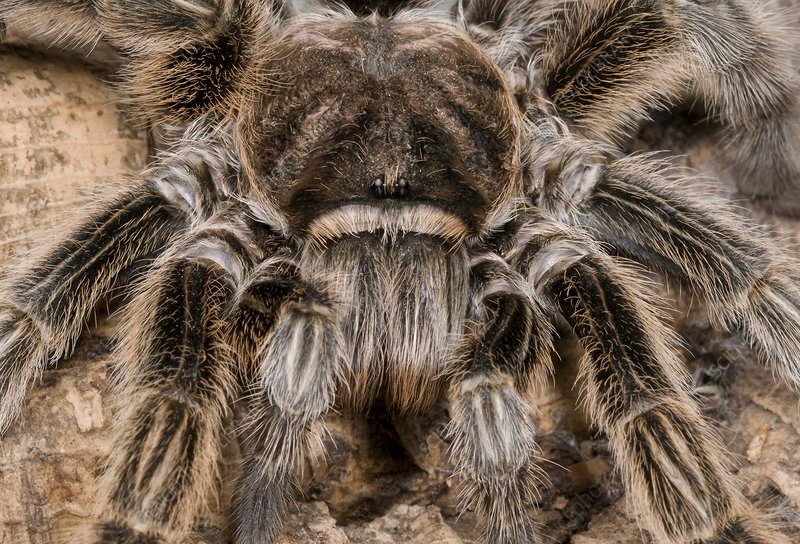ANIMAL: Chilean Rose Tarantula Grammostola rosea Type of Animal: Tarantula Habitat: Desert, scrub, burrows, semi-desert, scrub forest, open forest, rocky clearings, lower shrub areas in mountains Location(s): Chile & bordering areas of Bolivia & Argentina Appearance: Females larger than males, males have longer legs & fuzzier, females stocky & bulky, males more vibrant in color, 3 color morphs all possessing dark gray undercoat: drab dark gray/brown form w/ lighter beige/pinkish hairs, light pink form, & reddish-copper form, subtle rose casting on most specimens, hard exoskeleton, 8 eyes, 8 jointed legs, all appendages except tubular structures on abdomen called spinnerets attached to cephalothorax (head & thorax). Food/Diet: Grasshoppers, crickets, moths, beetles, roaches, mealworms, beetle larvae, moth larvae, locusts, fruit flies, small lizards, small mammals, earthworms, insect larvae, smaller spiders (females often prey on smaller males) Status in Wild: Stable Conservation: Breeding in zoos, pet trade, aquariums, & breeders Lifestyle: Solitary Additional Info: Called: Male Female Young-Spiderling Group-Solitary Weight: Male-2 oz Female-3 oz Gestation: 1.5 months Life Span: Males: 2-4 years Females: 12-15 years Body Length: Male-2 in Female-3 in Main predators are other tarantulas (females often prey on smaller males), hunting wasps, snakes, lizards, carnivorous/omnivorous mammals, & birds. Parasitized by nematodes & roundworms. Males can get up to 4.5 inches in diameter while females can get up to 5.5 inches. They’re active at night (nocturnal). Hairs near mouth capable of sensing chemicals giving spider basic sense of smell/taste. Digestive system can only deal w/ liquid food, so it vomits mixture of digestive enzymes onto food, breaking tissue down into liquid to be sucked up through mouthparts. Their droppings mostly dry, chalklike uric acid crystals. Fun Fact(s): Males usually only breed once in lifetime due to short lifespan. Females lay 80-1,000 eggs in an egg sac, which she protects. Like all tarantulas, they’re venomous. This species mildly venomous. Hairs on abdomen have sharp tips w/ microscopic barbs & they can kick off hair cloud at attacker. Very likely most common tarantula kept as a pet. They tend to be docile unless roughly handled but some individuals nippy.
